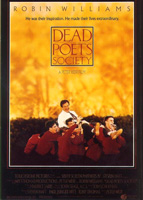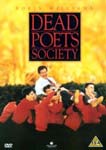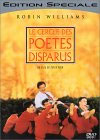Dead Poets Society
by Peter Weir
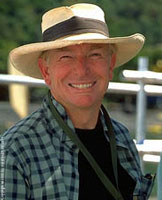
|
Director:
|
Peter Weir | |
|
Producer:
|
Steven Haft, Paul Junger Witt, Tony Thomas | |
|
Associate Producer:
|
Duncan Henderson | |
|
Production Companies:
|
Buena Vista / Silver Screen Partners IV / Touchstone Pictures | |
|
Screenplay:
|
Tom Schulman | |
|
Cinematographer:
|
John Seale, A.C.S., A.S.C. (DuArt Color, 35 mm spherical,1.85:1) | |
|
Editor:
|
William M. Anderson, Priscilla Nedd, Lee Smith | |
|
Production Designer:
|
Wendy Stites | |
|
Art Director:
|
Sandy Veneziano | |
|
Set Designer:
|
John H. Anderson | |
|
Costumes:
|
Marilyn Matthews | |
|
Music Score:
Non-Original Music: |
Maurice Jarre | |
|
Sound:
|
||
|
Cast:
|
Robin Williams (John Keating), Robert Sean Leonard (Neil Perry), Ethan Hawke (Todd Anderson), Josh Charles (Knox Overstreet), Gale Hansen (Charlie Dalton), Dylan Kussman (Richard Cameron), Allelon Ruggiero (Steven Meeks), James Waterston (Gerard Pitts), Norman Lloyd (Mr. Nolan), Kurtwood Smith (Mr. Perry), Carla Belver (Mrs. Perry), Leon Pownall (McAllister), Alexandra Powers (Chris Noel), Alan Pottinger (Bubba) | |
|
Runtime:
|
128 min | |
|
Premiere:
|
2 June 1989 (USA) | |
|
Awards:
|
Academy Award 1989 Oscar Best Original Screenplay British Academy Awards 1989 Best Film; Best Original Film Score |
|
"... the film moves perniciously from a shallow, if pleasing, inspirational piece to a maudlin tragedy. Because the film is so skillfully highbrow at presenting its coming-of-age story, which has the effect of rewarding the audience's intelligence, many viewers loved Weir's film, making it something of a minor classic to certain devoted fans. No doubt it is rich with atmosphere, thanks in large part to John Seale's masterful cinematography, and buoyed by energetic young talent. But a closer reading reveals deep flaws, which ultimately render it a simplistic and exaggerated message-movie rather than a work of emotional or intellectual complexity."
— Derek Armstrong, All-Movie Guide "In its narrative, Weir’s film is not an innovative work. Rather, it recycles old plots and builds them into a very emotional spectacle ..., a serious, lyrical, and romantically idealistic work. ... Visually, Dead Poets Society belongs to the most arresting of Weir’s films. It is enhanced by the masterful photography of John Seale, who worked with Weir as a camera operator as early as in the production of Picnic at Hanging Rock. Seale’s camera catches images of Welton’s countryside bathed first in gold and green and later in snow: autumnal images are followed by snowy winter landscapes. Stanley Kauffmann emphasizes that Seale 'shoots the seasons of the year like archetypal statements.' The photography creates the film’s dramatic mood; as in Witness, the story is told through images and every image strengthens the story. In this sense, Dead Poets Society is one of Weir’s most controlled works. The director avoids a surplus of dialogue and achieves the emotional impact purely cinematographically, through the precisely composed mise-en-scène. Williams and the group of young actors are in a way submitted by the camera. Faces in close-up, which create intimacy, dominate the frame.The young actors do not act but simply are in the film, totally subjugated to the camera. The atmosphere of Dead Poets Society is achieved by mise-en-scène, camera movement, and music (Maurice Jarre’s fourth collaboration with Weir). ... |
| Distribution | Touchstone Home Video / Buena Vista Region 1 (North America) |
Touchstone Home Video / Buena Vista Region 2 (UK) |
| Runtime | 128:32 min | 123:34 min (+ 4% PAL Speedup = 129 min) |
| Video | 1.85:1/4:3 Letterboxed WideScreen Average bitrate: 4.57 mb/s NTSC 720x480 29.97 f/s |
1.78:1/16:9 Anamorphic WideScreen Average Bitrate: 5.50 mb/s PAL 720x576 25.00 f/s |
| Audio | English Dolby Digital 2.0 Surround Français Dolby Digital 2.0 Surround |
English Dolby Digital 5.1 Surround English Description for the Visually Impaired Dolby Digital 2.0 Mono Español Dolby Digital 5.1 Surround Audio Commentary Dolby Digital 2.0 Mono |
| Subtitles | English (captions) • Closed Captioning: CC | English (captions) • English • Dansk • Svenska • Suomi • Norsk • Íslenska |
| Features | None | • Audio Commentary by Peter Weir, John Seale, Tom Schulman • Scrapbook Featurette (26:55 min) • Raw unedited takes (07:57 min) • Alan Splet tribute (10:59 min) • John Seale's Master Class (21:36 min) • Theatrical Trailer (02:45 min) • 6-pages Booklet with Production Notes |
| DVD Release Date: 10 November 1998 Keep Case Chapters: 23 DVD Encoding: NTSC Region 1 SS-SL/DVD-5 |
DVD Release Date: 13 May 2002 Keep Case Chapters: 10 DVD Encoding: PAL Region 2 (UK) SS-DL/DVD-9 |
|
|
Also available in the same transfer and with identical supplements from Touchstone / Buena Vista in France and Germany: |
Frame 1: Menu
(R1 left, R2 right)
Frame 2
(R1 left, R2 right)
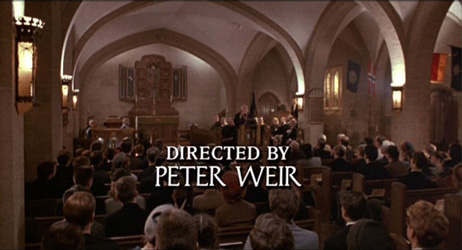 |
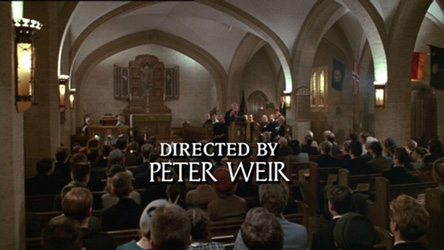 |
Frame 3
(R1 left, R2 right)
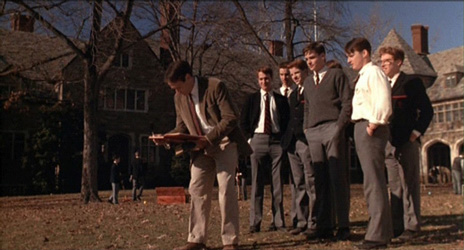 |
 |
Frame 4
(R1 left, R2 right)
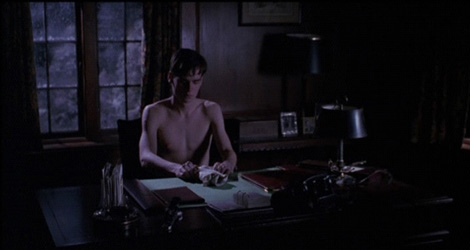 |
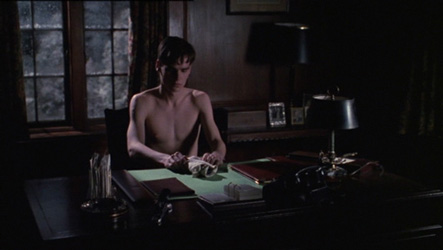 |
Frame 5
(R1 left, R2 right)
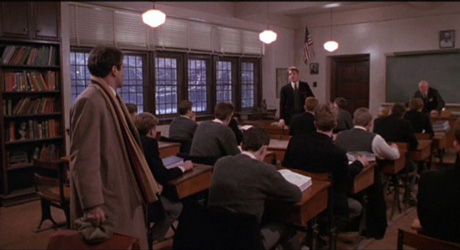 |
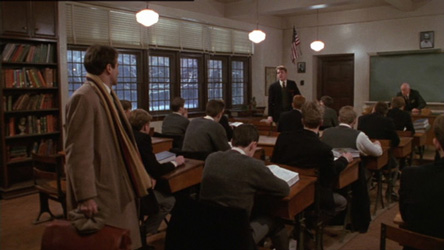 |
Average Bitrate Region 1:
mb/s
Average Bitrate Region 2:
mb/s
Last update: 6 Aug 2002
